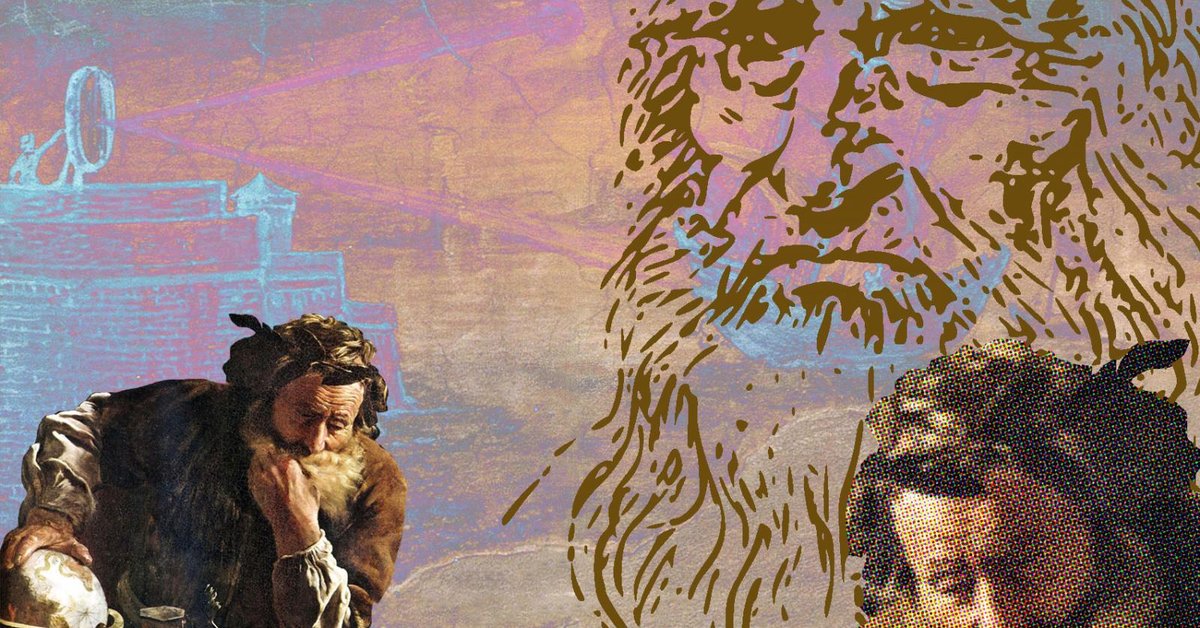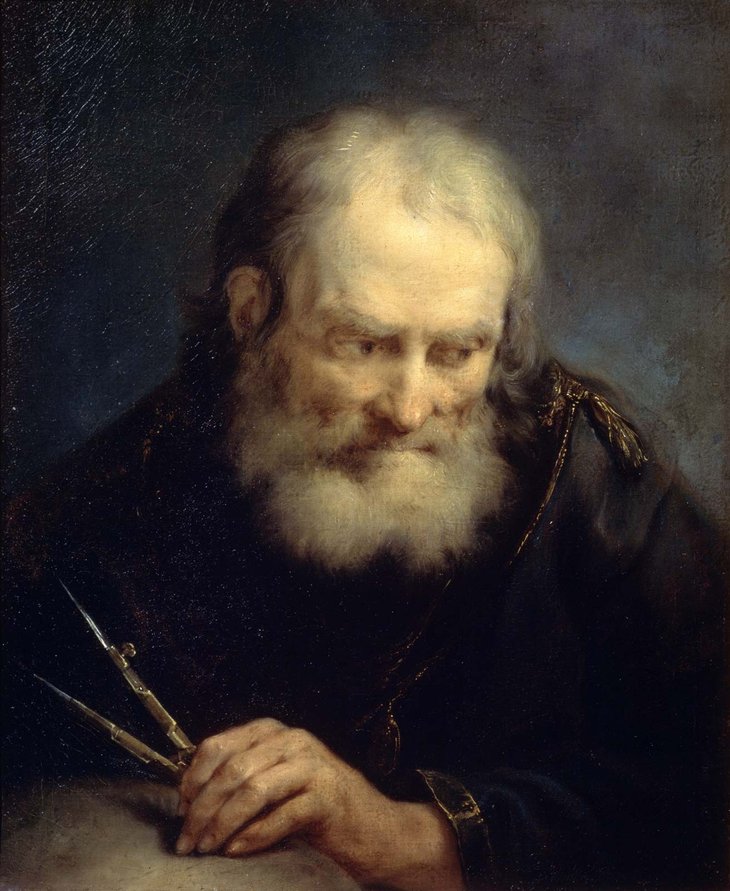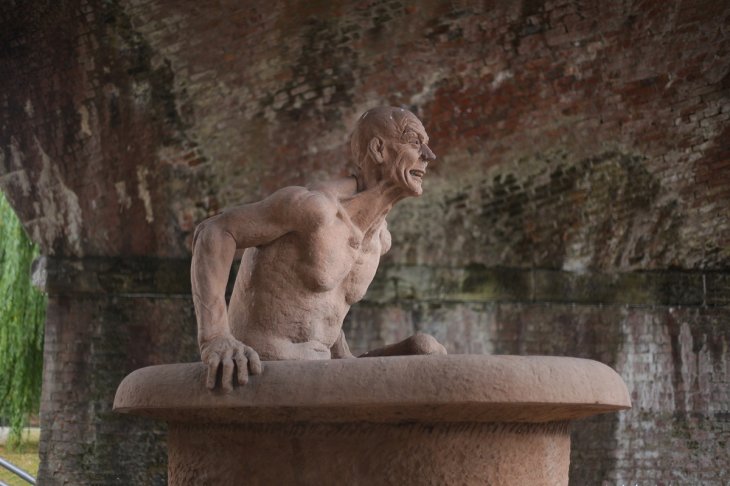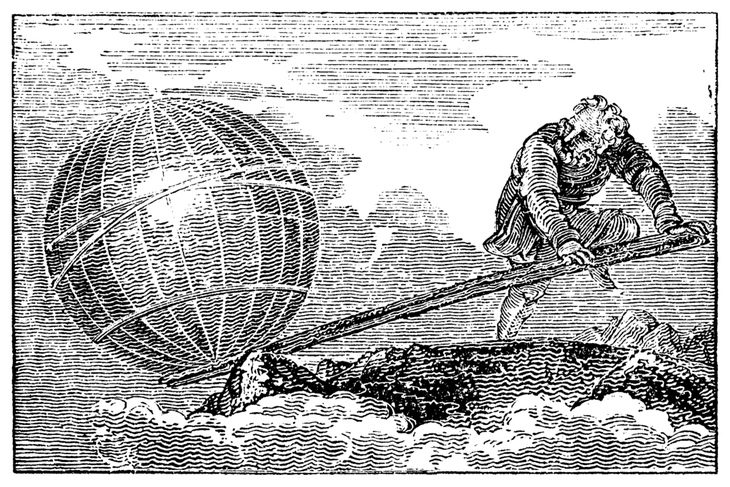The Life And Legacy Of Greek Mathematician Archimedes
Harin - Dec 19, 2019

Like other important figures from ancient times, the story about the life of Archimedes was filled with many myths as well as non-historical accounts.
- Shakuntala Devi Awarded Guinness World Records’ Fastest Human Computation Certificate After 40 Years
- This Magical Number Will Help You Find A Parking Space, The Perfect Apartment, And Even A Suitable Spouse
- This Statistic Can Determine How Likely It Is You Will Catch The Coronavirus
One of the first things we ever read about Archimedes is the famous scene in which he runs outside with his naked and wet body on the streets of Syracuse and shouted “Eureka!” However, what this nudist episode failed to do is to capture the respect that Greek mathematician deserves.
In the field of mathematics and engineering, Archimedes is considered to be a pioneer. His father was Phidias, an astronomer. He lived in Syracuse, a Greek city. He studied in Alexandria where mathematician Euclid once studied. He had an intimate relationship with King Hieron II, Syracuse’s ruler.

Like other important figures from ancient times, the story about the life of Archimedes was filled with many myths as well as non-historical accounts. Therefore, it is challenging to distinguish between legends and actual historical facts.
Historical Context
Archimedes played an important role in the war between Syracuse and Rome during the Second Punic War by applying to war weapons his mathematical knowledge.
The Contributions of Archimedes
During his time, the cultural center of Greek was Alexandria where Archimedes received the best training in several areas including mathematics. His devotion to mathematics could be compared to Newton’s since both of them didn’t even taking care of themselves just to focus on mathematics. Three centuries later, Archimedes was described by Plutarch as:

Archimedes' mathematical works can be divided into three different groups.
1. Works that prove theorems that are linked with areas and solids bounded by surfaces and curves.
2. Works that analyze issues in hydrostatics and statics from a geometrical viewpoint.
3. Other works which include some emphasizing counting like The Sand Reckoner.
In his On the Measurement of the Circles book, Archimedes comes to a conclusion about the ratio between a circles’ circumference and its diameter. This is what we called “pi” today. According to Archimedes, the ratio is less than 3 10/71 and greater than 3 1/7.
The famous episode of Archimedes running around naked began with a crown that was made for King Hieron II. The king had a suspicion that the artisan took some of the gold he had received for the task, replacing it with a mixture made of gold and other materials that had lower quality. While the king wanted to find out if the gold had been replaced, he didn’t want to damage the crown either. Archimedes was one of those experts requested to test the crown. After spending a few weeks thinking, he came up with the answer while was dipping himself into a bathtub. There were two things that he noticed. The first one was that the overflowed water was in accordance with how deep he immersed in the water. Secondly, the deeper his body was in the water, the lesser it weighed.
If the legend was true, Archimedes then excitedly ran down the street naked, shouting that he had figured out the answer. He formulated Archimedes’ principle or the buoyancy law. The law states that any object which is partially or fully submerged in a fluid will go through an upward force. This force is equal to the displaced fluid’s weight. Back at his house, Archimedes discovered that silver, when dip into the water, would displace more water compared to that of gold. That is because the volume per weight of silver is more than that of gold. The crown was then immersed in the water and compared the displaced water with a quantity of gold that had the same weight as the crown. Archimedes then concluded that the artisan did keep some of the gold for himself, confirming the suspicions of the king.

Archimedes also formulated the Lever and Balance law. The mechanical advantages of the pulley and the lever amazed him to the point that he stated:

Archimedes was challenged by King Hieron, to test his claim. A designed series of pulleys and cogs that Archimedes designed was so clever that while he sat on an end of the machine, he could pull out of the water a fully loaded vessel, then placed it onto the ground. Up until that moment, this task would need a hundred men to be accomplished.

Death and Legacy
After King Hieron II died, the war between the Romans and Syracuse broke out. The Romans attacked the city by both sea and land. Archimedes continued playing a critical role in defending the city. He then applied his engineering knowledge to develop and arrange catapults hurling heavy stones to a far distance, piercing holes in the walls to let bowmen shoot their arrows. He also set up cranes to release stones onto the ships of the Roman when they came near.
These inventions proved to be so effective to the point that the Roman commander, Marcus Claudius Marcellus gave up attacking Syracuse and came to the conclusion that only a siege was the only solution. In 212 BCE, Syracuse surrendered.
The knowledge and talent of Archimedes impressed Marcellus. So the Roman commander ordered that Archimedes be captured alive. When the roman soldiers found Archimedes, he was drawing geometrical figures on the beach and working on his theorems. He ignored the orders of the soldiers and requested to have some more time in order to finish his work. The soldiers probably felt a little insulted killed Archimedes.
The Greek mathematician died but his works and ideas still live on and have survived during the Middle Ages. During the Renaissance, his works were famous in the developing scientific movement.
Because of his clever experiments, Galileo was also really interested in the works of Archimedes.
>>> Top 10 Famous Indian Mathematicians In The World
Featured Stories

Features - Jul 01, 2025
What Are The Fastest Passenger Vehicles Ever Created?

Features - Jun 25, 2025
Japan Hydrogen Breakthrough: Scientists Crack the Clean Energy Code with...

ICT News - Jun 25, 2025
AI Intimidation Tactics: CEOs Turn Flawed Technology Into Employee Fear Machine

Review - Jun 25, 2025
Windows 11 Problems: Is Microsoft's "Best" OS Actually Getting Worse?

Features - Jun 22, 2025
Telegram Founder Pavel Durov Plans to Split $14 Billion Fortune Among 106 Children

ICT News - Jun 22, 2025
Neuralink Telepathy Chip Enables Quadriplegic Rob Greiner to Control Games with...

Features - Jun 21, 2025
This Over $100 Bottle Has Nothing But Fresh Air Inside

Features - Jun 18, 2025
Best Mobile VPN Apps for Gaming 2025: Complete Guide

Features - Jun 18, 2025
A Math Formula Tells Us How Long Everything Will Live

Features - Jun 16, 2025
Comments
Sort by Newest | Popular